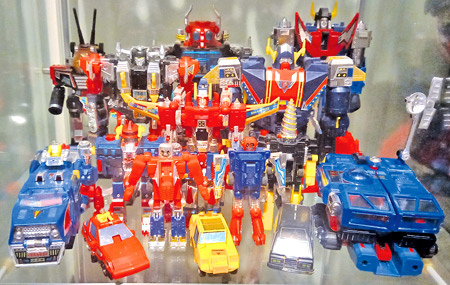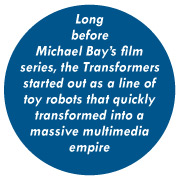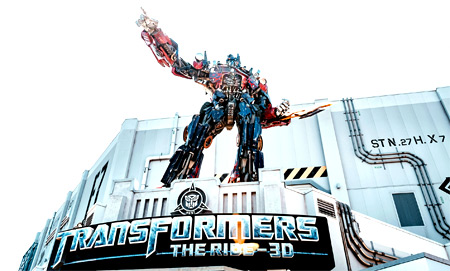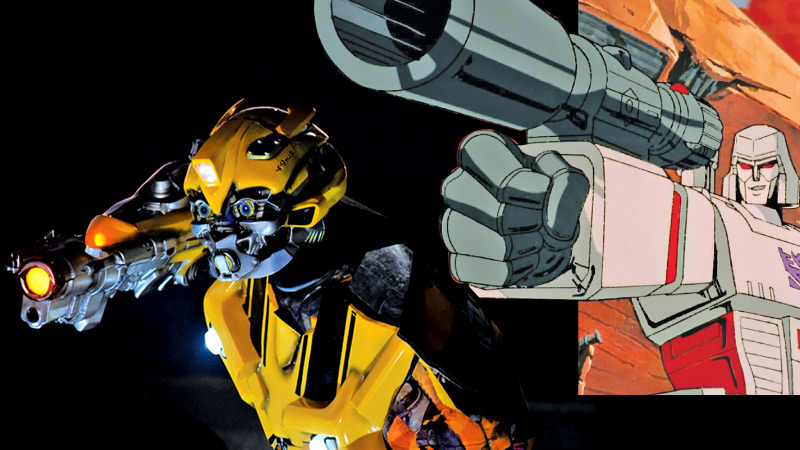With the recent release of ‘Transformers One’, the latest installment in Hasbro’s growing series of films based on its most popular toy IPs, the Transformers franchise is back and fully animated on the big screen for the first time since the 1986 movie over three decades ago.
 The film attempts to bring the series back to its cartoon roots, peeling away from the commercially successful mixed bag that was the live-action Transformers film franchise.
The film attempts to bring the series back to its cartoon roots, peeling away from the commercially successful mixed bag that was the live-action Transformers film franchise.
Long before Michael Bay’s film series, the Transformers started out as a line of toy robots that quickly transformed into a massive multimedia empire, encompassing animated TV shows, blockbuster films, comic books, and more.
The first Transformers were, themselves, an evolution of existing franchises. Specifically, Hasbro bought out two existing toylines from the Japanese toy company Takara, Diaclone and Micro Change, which were rebranded to be sold as Transformers in America in 1984.
 The original Japanese mecha toys were designed by Shoji Kawamori, the creator of Macross, a massively popular and influential mecha anime that was also later rebranded in the US as Robotech. Many of the most iconic characters in the Transformers franchise, such as Optimus Prime, the original car Autobots, plane Decepticons, Dinobots, and more were all directly taken from Diaphone.
The original Japanese mecha toys were designed by Shoji Kawamori, the creator of Macross, a massively popular and influential mecha anime that was also later rebranded in the US as Robotech. Many of the most iconic characters in the Transformers franchise, such as Optimus Prime, the original car Autobots, plane Decepticons, Dinobots, and more were all directly taken from Diaphone.
Miniature cockpits
That these early toys had miniature cockpits for a theoretical pilot to sit in, a feature that isn’t in any Transformers toy going forward, was a holdover of the shift from piloted Diaphone mechs to sentient Transformer robots.
Megatron and many other mainstays from this first generation of Transformers were taken from the Micro Change franchise, which were robots that transformed into household devices, or handheld objects like guns or watches.
From the jump, Hasbro saw the potential in the Transformers as a franchise and there was a massive cross-media marketing push to make it popular. They hired Marvel Comics, which had just recently barely bounced back from bankruptcy into one of their most profitable runs yet, to write the plot and backstory for the Transformers, along with a short comic book run in 1984 that turned into a long runner with the success of the greater franchise.
 The original Marvel comic run had the setting to be directly connected with the existing Marvel Universe, so there were many appearances of other popular Marvel characters such as Spider-Man.
The original Marvel comic run had the setting to be directly connected with the existing Marvel Universe, so there were many appearances of other popular Marvel characters such as Spider-Man.
Concurrently with the debut Transformers toy line and comic book, the first Transformers animated series aired in 1984, and for many, this was the way they were introduced to the franchise. The story presented in the cartoon had barely anything in common with the comic books, and had a completely contradictory back story, though it would use the same characters to synergise with the toys. Though this show was entirely merchandise-driven, with entire plots written around introducing and showcasing new toys for children to buy, it held enough intrigue and depth that it still defines what the franchise is today, so many decades later.
Regulations
By the time regulations cracked down on this predatory practice, Transformers had established itself as a cultural phenomenon.
With the success of the toy line and the animated series, Transformers quickly became a cross-media powerhouse. In 1986, the animated film Transformers: The Movie was released in theatres, and throughout the late 1980s and 1990s, the franchise continued to expand, with various new animated series such as Beast Wars and Transformers: Armada. But the biggest shift in the franchise’s history came in 2007 with the release of Michael Bay’s live-action Transformers film.
Though these Transformers films received mixed critical reviews, they cemented the franchise’s place in the mainstream and led to a string of sequels that continued even until last year, though they were being received worse with every new iteration.
But even setting aside the live-action series Transformers has continued to have a strong showing as a global cultural phenomenon, appealing to both today’s children and nostalgic adults of the original 80s cartoon.
The series is always reinventing itself, with new animated shows and comics exploring new continuities or expanding on the old ones. Its expansive universe, rich mythology, complex characters, and constant innovation, prove that the franchise will always continue to grow and transform.




